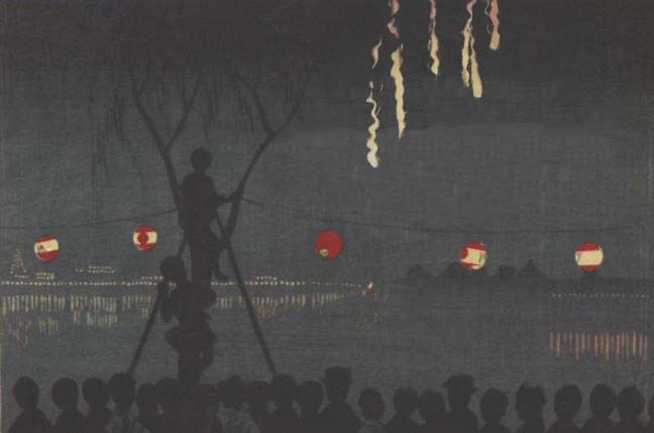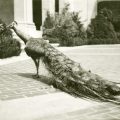On Sept. 3, 1868, the city called Edo ceased to exist. Renamed Tokyo (“Eastern Capital”) by Japan’s new rulers, the city became the primary experiment in a national drive toward modernization. Tokyo was filled with railroads, steamships, gaslights, telegraph lines and large brick buildings—never-before-seen entities. Kobayashi Kiyochika (1847–1915) was a minor retainer of a recently deposed shogun who had followed his master into exile. When he returned to his birthplace in 1874, he found a city transformed.
Self-trained as an artist, Kiyochika set out to record his views of Tokyo. A devastating fire engulfed the city in 1881 and effectively ended the project, but the 93 prints he had completed were unlike anything previously produced by a Japanese artist.
His innovative use of color explored the possibilities of light—both man-made and natural, from dusk to dawn—and subjects drift through moody shades of gray and blue interspersed with fireworks, moonlight, gaslight and fireflies. Equally startling are his human figures. Often silhouetted, they are at once together and alone—observers, rather than actors, in an oddly quiet landscape.
This woodblock print, “Fireworks at Ike-no-Hata” can be viewed in the exhibition “Kiyochika: Master of the Night” March 29–July 27 at the Smithsonian’s Arthur M. Sackler Gallery.
The Sackler Gallery will present a related exhibition, “An American in London: Whistler and the Thames” May 3–Aug. 17, featuring James McNeill Whistler’s images of London’s iconic waterways. The more than 70 works show the city’s dramatically changing urban environment.






